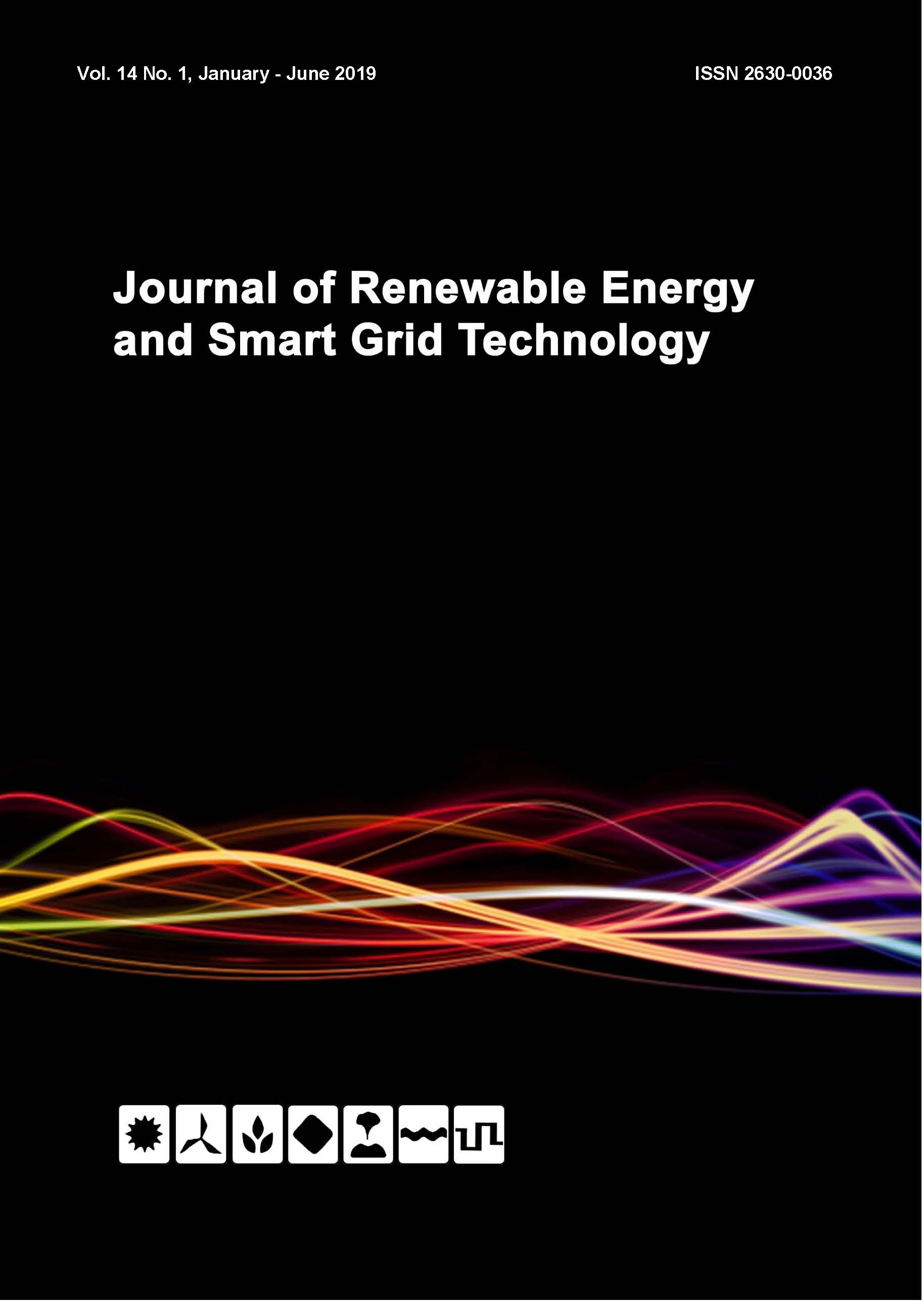The Thermal Comfort of Thai Students in University Buildings under Variable Indoor Conditions of Air Conditioned Space
Keywords:
thermal response time, thermal comfort, air condition room, ASV, PMVAbstract
The purpose of this research is to determine the thermal response time and temperature range of thermal comfort of Thai students for air-conditioned classrooms survey questionnaires and by the predicted mean vote (PMV) equations, and thereby recommend air-conditioner temperature settings that also saves energy. The students were tested in a 8´9´3 m3 room size with two units of 40,000 Btu/h split-type air conditioners. The air-conditioner temperature setting was varied from 25, 26, 27 and 28 °C and at each temperature setting, the air speed were varied at three levels. The thermal comfort survey questionnaires were based on ASHRAE thermal sensation scale. The results of the thermal sensation vote (TSV) using the questionnaires were as follow; the air temperature at 26±0.5–28±0.5 °C at all average air speed (»0.5-0.9 m/s) were acceptable to the research subjects. Therefore, instead of setting the temperature at 25°C, which is the normal set point in most buildings as recommended by government; the air temperatures can be set higher. It can be between 26–28 °C but with the air speed also increased. These higher air-conditioner temperature settings help reduce energy consumption of air conditioners. The range of neutral temperature (TSV, PMV = 0) from the TSV and PMV equations on air temperature (ta) were 26.7–28.3 °C and 27.7–28.4 °C respectively, which all correspond to thermal comfort acceptability of thermal sensation vote (26±0.5–28±0.5 °C), which is the accepted temperature. In addition, with regards to the relationship of TSV and PMV with air temperature (ta), effective temperature (ET*) and operative temperature (top) at neutral temperature (TSV, PMV = 0), the difference between neutral temperature of TSV and PMV does not exceed 1°C. The PMV equation can predict the thermal comfort of thermal sensation of subjects from the survey when the air conditioner temperature settings are changed from 25°C to 26–28°C, estimated energy savings ranged from 7.67–20.11%. This is approximately 7.30% saving for 1°C increase. The results of this research can be applied to the operation and control of classroom air-conditioners in university buildings to assure thermal comfort of students.
References
[2] Lin, Z., & Deng, S. (2008). A study on the thermal comfort in sleeping environments in the subtropics -developing a thermal comfort model for sleeping environments, Building and Environment, 70–80.
[3] Nguyen, A.T. (2012). An adaptive thermal comfort model for hot humid South-East Asia, Building and Environment, 56, 291-300.
[4] Cao, B., & Zhu, Y. (2011). Field study of human thermal comfort and thermal adaptability during the summer and winter in Beijing, Energy and Buildings, 43, 1051–1056.
[5] Khedari, J., Yamtraipat, N., Pratintong, N., & Hirunlabh, J. (2000). Thailand ventilation comfort chart, Energy and Buildings, 32, 245–249.
[6] Heang, R.L., Lin, T.P., & Kuo, N.J. (2006). Field experiment on thermal comfort in campus classrooms in Taiwan, Energy and Buildings, 38, 53-62.
[7] Fanger P.O. (1970). Thermal Comfort: Analysis and applications in environmental engineering, Copenhagen, Danish Technical Press.
[8] Parson, K.C. (2003). Human Thermal Environment, 2nd edition, Taylor & Francis, London.
[9] Puangmalee, N., Hussaro, K., Boonyayothin, V., & Intanin, J. (2017). The thermal response time and temperature of thermal comfort for Thai student in university buildings under air condition room, The GMSARN International Conference on Energy Connectivity, Environment, and Development in GMS, 28-30 November 2017, Vietnam.
[10] Humphrey, M. A., & Nicol, J. F. (1998). Understanding the adaptive approach of thermal comfort, ASHRAE Transaction, 145-167.
[11] Atthajariyakul, S. (2008). Small fan assisted air conditioner for thermal comfort and energy saving in Thailand, Energy Conversion and Management, 49, 2499–2504.
[12] Yamtraipat, N. (2005). Thermal comfort standards for air conditioned buildings in hot and humid Thailand considering additional factors of acclimatization and education level, Solar Energy, 78, 504-517.
Downloads
Published
How to Cite
Issue
Section
License
All copyrights of the above manuscript, including rights to publish in any media, are transferred to the SGtech.
The authors retain the following rights;
1. All proprietary rights other than copyright.
2. Re-use of all or part of the above manuscript in their work.
3. Reproduction of the above manuscript for author’s personal use or for company/institution use provided that
(a) prior permission of SGtech is obtained,
(b) the source and SGtech copyright notice are indicated, and
(c) the copies are not offered for sale.



